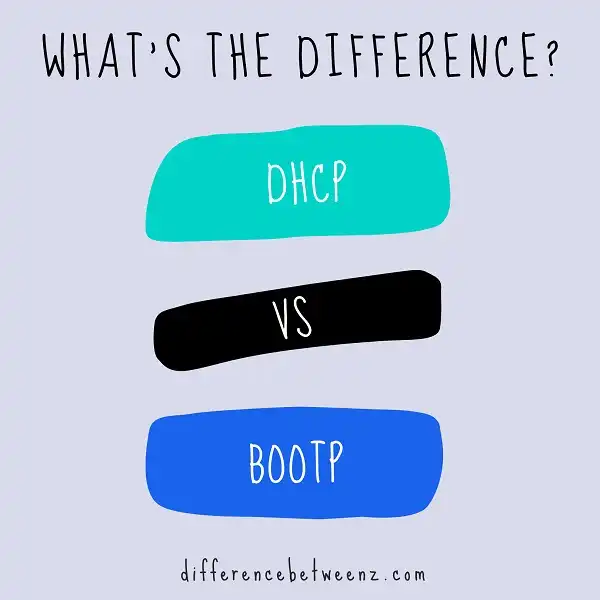DHCP and BOOTP are two different protocols used for managing IP addresses on a network. DHCP is more popular and generally easier to use, but BOOTP can be useful in specific cases. Understanding the differences between them is important for setting up your network correctly.
What is DHCP?
DHCP, or Dynamic Host Configuration Protocol, is a network protocol used to assign IP addresses and other network settings to devices connected to a network. DHCP is typically used in larger networks where it would be impractical to manually configure each device. DHCP works by assigning a pool of IP addresses to DHCP clients. When a client connects to the network, it requests an IP address from the DHCP server. The server then assigns an available IP address from the pool and configures the client with the appropriate settings. DHCP can also be used to automatically configure other network settings, such as DNS servers and default gateway. DHCP is a convenient way to manage IP addresses in a network, and it helps to ensure that all devices are properly configured.
What is BOOTP?
BOOTP is a protocol that allows a computer to request an IP address from a server. BOOTP is typically used by devices that do not have a static IP address, such as laptops and mobile devices. When a BOOTP client sends a request to a BOOTP server, the server will respond with an IP address that the client can use. BOOTP is similar to DHCP, but BOOTP does not include support for the automatic renewal of IP addresses. BOOTP is also not as widely supported as DHCP. As a result, BOOTP is typically only used in small networks where DHCP is not available.
Difference between DHCP and BOOTP
DHCP and BOOTP are two protocols that are used for different purposes. DHCP is used for assigning IP addresses to devices on a network, while BOOTP is used for booting diskless workstations. DHCP is a newer protocol than BOOTP, and it offers several advantages over BOOTP. DHCP is more flexible than BOOTP, and it can be configured to automatically assign IP addresses to new devices as they connect to the network. DHCP also offers support for DHCP options fields, which allow additional information to be included in DHCP messages. As a result, DHCP is the preferred protocol for assigning IP addresses on most networks. However, BOOTP remains in use on some legacy networks.
Conclusion
DHCP and BOOTP are two different protocols used for IP address allocation. While both offer benefits, DHCP is the more commonly used protocol. If you’re looking to set up an IP addressing scheme for your network, it’s important to understand the difference between these two protocols.


